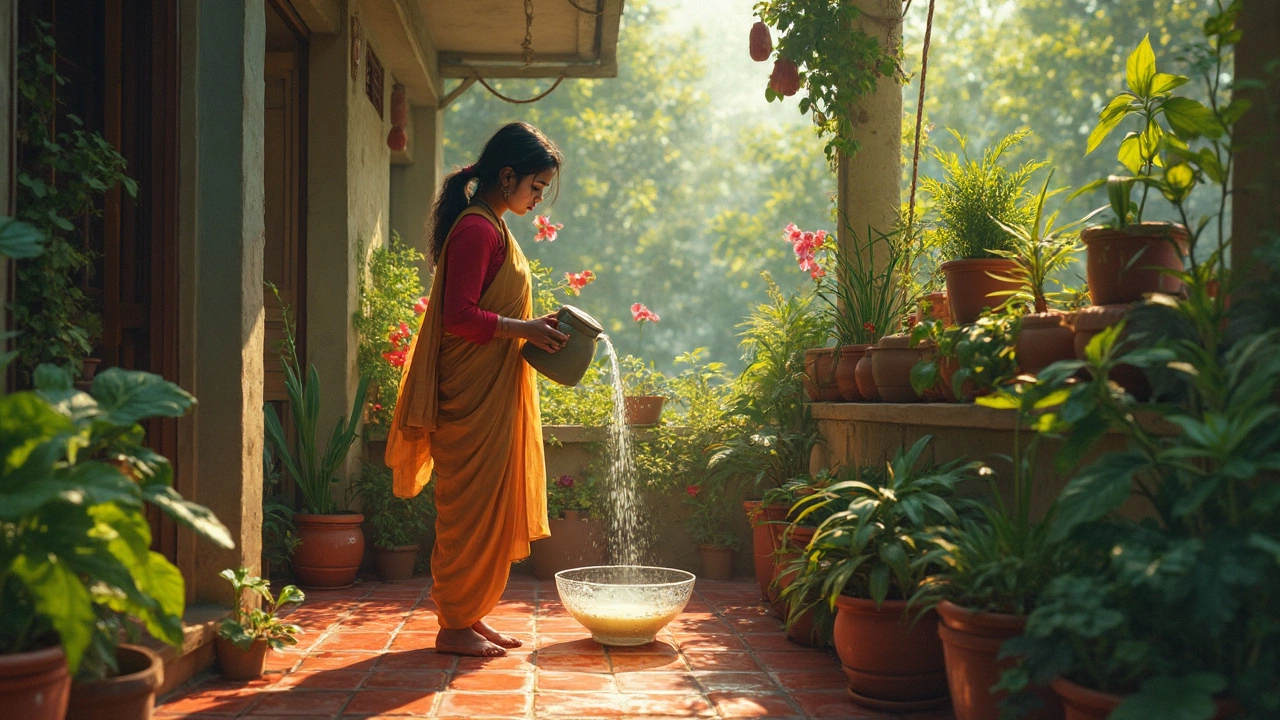Tap water straight from the faucet isn’t always ideal for houseplants. Chemicals like chlorine and minerals can mess with plant health. This article breaks down why neutralizing tap water matters and how you can easily do it at home. You’ll learn safe, quick methods to make tap water friendlier to your indoor green buddies. Ready to see stronger, happier plants?
Plant Watering: How to Water Plants Right in Indian Gardens
When it comes to plant watering, the act of supplying water to plants in a way that supports growth without causing harm. Also known as irrigation, it’s not just about turning on a tap—it’s about timing, amount, and understanding what your soil and plants really need. Most gardeners in India water too often, too much, or at the wrong time. They see dry soil and assume the plant is thirsty. But that’s not always true. In fact, overwatering kills more houseplants and garden plants here than pests or disease. Roots rot when they sit in wet soil too long, especially in heavy Indian clay or poorly drained pots. You don’t need a fancy system to fix this—you just need to learn how to read your plants.
Drip irrigation, a method that delivers water slowly and directly to the root zone, is one of the best tools for Indian gardens. It’s not just for big farms—home gardeners on balconies and terraces use it too. Drip systems cut water waste, reduce fungal diseases, and keep leaves dry, which matters in humid monsoon zones. But even drip systems fail if emitters clog or if the schedule is wrong. A system that runs for 30 minutes every day might drown your succulents but barely touch your tomatoes. The key isn’t the tool—it’s matching the water to the plant type, season, and soil. Garden soil moisture, the level of water held in the soil around plant roots changes daily. A finger test—stick your finger two inches down—is still the most reliable way to know if it’s time to water. If it’s damp, wait. If it’s dry, water deeply but infrequently.
Watering isn’t just about quantity—it’s about rhythm. Plants in pots on a south-facing balcony in Chennai need water every other day in summer. The same plant in a shaded balcony in Delhi might need it only once a week. Monsoon rains change everything. Many gardeners forget to turn off their irrigation systems when it rains, leading to waterlogged roots. And then there’s the myth that morning watering is always best. In humid areas, wet leaves overnight invite mildew. Evening watering can work if the leaves dry before nightfall. The real answer? Observe. Look at your plants. Watch how the soil dries. Feel the weight of your pots. Notice when leaves droop—not just in heat, but in overwatered soil too. The best gardeners aren’t the ones with the most gadgets. They’re the ones who pay attention.
What you’ll find below are real fixes for real problems. From how to save an overwatered houseplant to why your drip emitters keep clogging, these posts cut through the noise. You’ll learn what plants in Indian conditions truly need—no fluff, no theory, just what works on balconies, terraces, and small farms. Whether you’re growing basil in a bucket or tomatoes in a backyard, the right watering habit makes all the difference.
